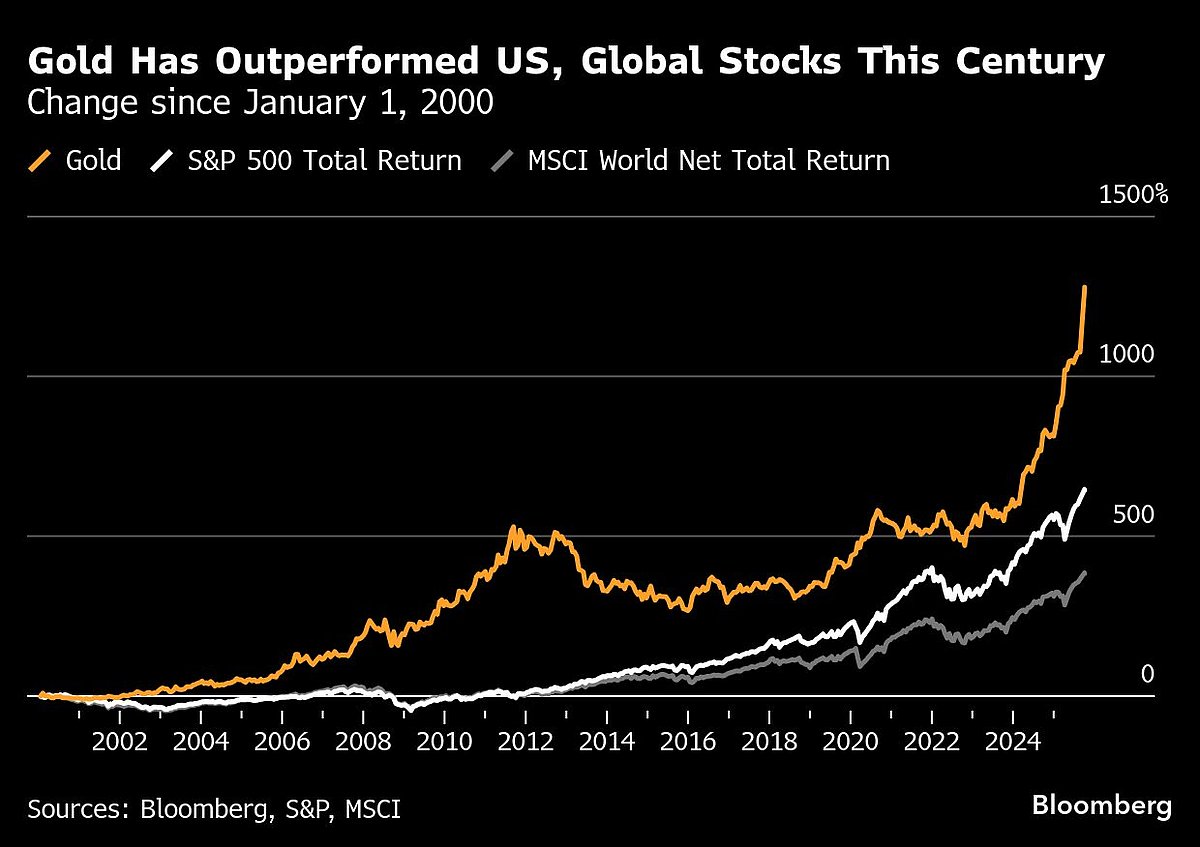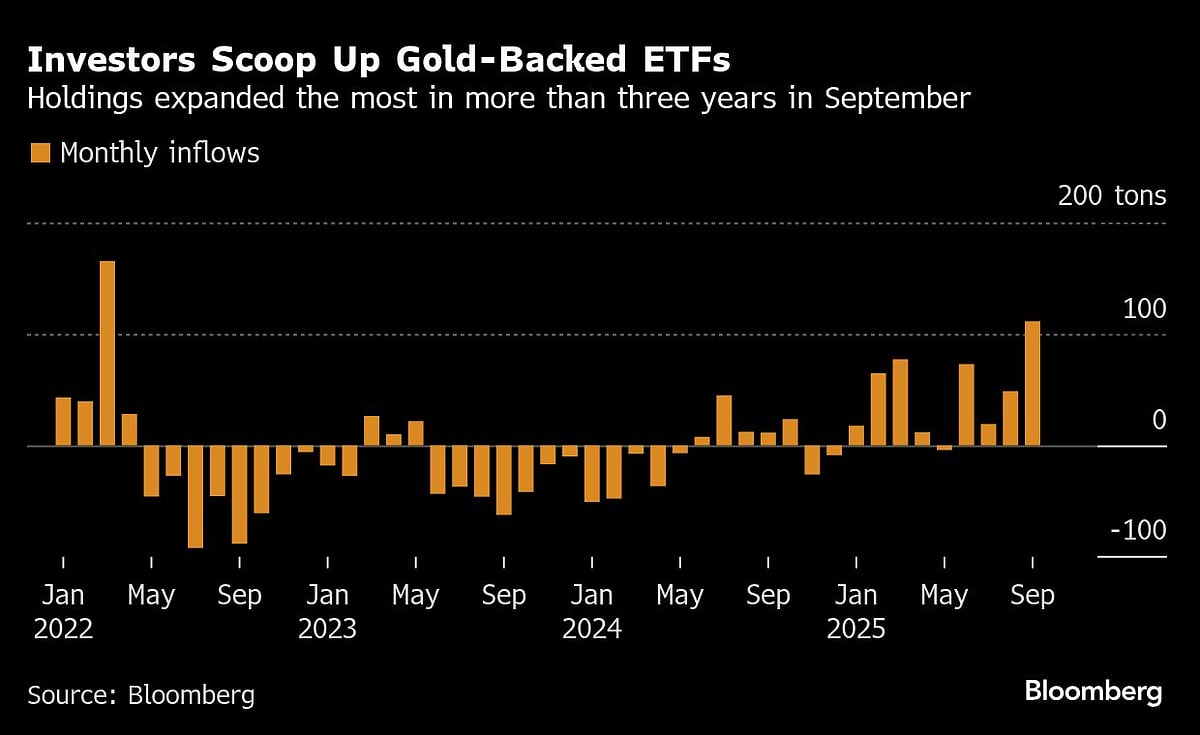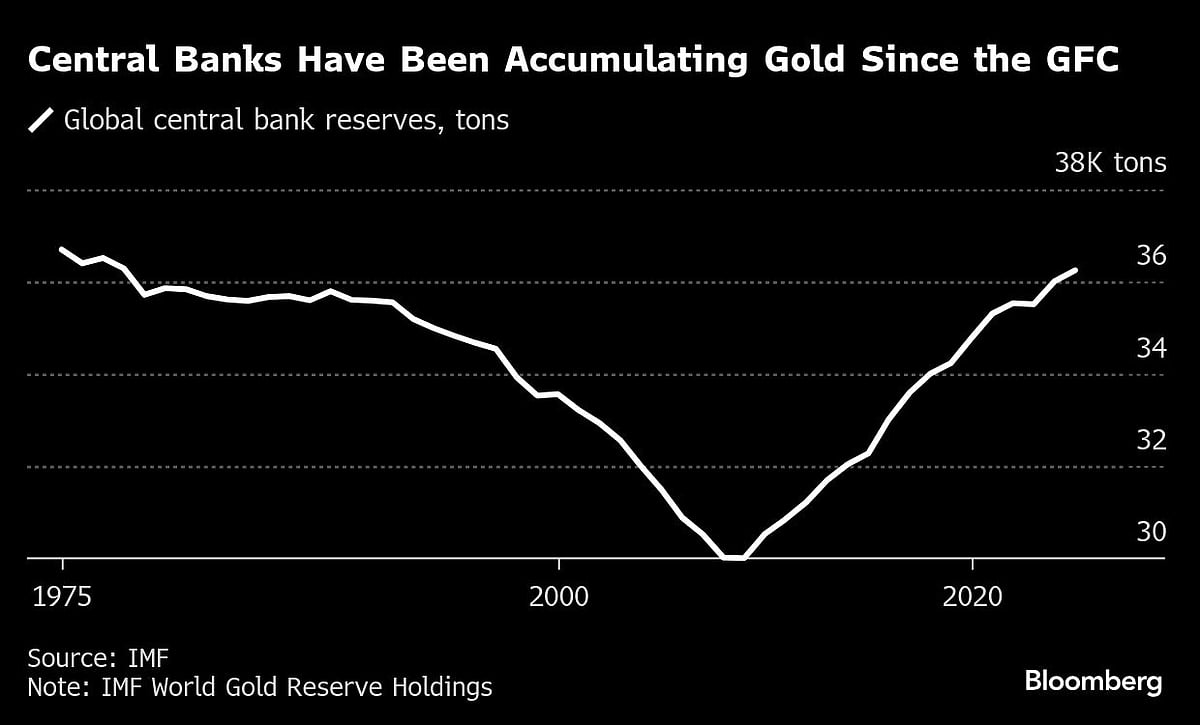Gold Tops $4,000 For First Time Fueled By US Shutdown
Spot gold rose as much as 1.9% to a new peak of $4,059.31 an ounce Wednesday and traded at $4052.26 as of 1:22 p.m. in New York.

Spot gold smashed through $4,000 an ounce for the first time, as concerns over the US economy and a government shutdown added fresh momentum to a scorching rally.
It’s a milestone for bullion, which traded below $2,000 just two years ago, with returns that now well outstrip those for equities this century. Gold has jumped more than 54% this year in the face of uncertainties over global trade, the Federal Reserve’s independence and US fiscal stability.
Heightened geopolitical tensions have also boosted demand for haven assets this year, while central banks have continued to buy the precious metal at an elevated pace.

The rally has taken on extra urgency as investors seek protection from potential market shocks following the government funding impasse in Washington. The start of the Fed’s monetary easing cycle has also been a boon for gold, which doesn’t pay interest. Investors have responded by piling into exchange-traded funds, with bullion-backed ETFs seeing their biggest monthly inflow in more than three years in September.
“Gold breaking $4,000 isn’t just about fear — it’s about reallocation,” said Charu Chanana, a strategist at Saxo Capital Markets Pte. “With economic data on pause and rate cuts on the horizon, real yields are easing, while AI-heavy equities look stretched. Central banks built the base for this rally, but retail and ETFs are now driving the next leg.”
Spot gold rose as much as 1.9% to a new peak of $4,059.31 an ounce Wednesday and traded at $4052.26 as of 1:22 p.m. in New York.
The price of gold typically track broader economic and political stresses. The metal breached $1,000 an ounce in the aftermath of the global financial crisis, $2,000 during the Covid pandemic, and $3,000 as the Trump administration’s tariff plans washed over global markets in March.
The precious metal has now broken past $4,000 against the backdrop of, among other things, US President Donald Trump’s assault on the Fed, including threats against Chair Jerome Powell and a push to oust Governor Lisa Cook, the clearest test so far of the US central bank’s autonomy.

A pliant Fed that would lower rates and spur higher inflation could set up a Goldilocks situation for gold. Bullion is seen as an inflation hedge but is also weighed down by high borrowing costs, which make cash or bonds more appealing.
“We expect gold to reach a cyclical peak when there is greatest market concern about the outlook for Fed independence,” Macquarie Bank Ltd. analysts wrote in a Sept. 30 note. “In the event, however, that a compromised Fed were to make clear policy errors, gold’s performance should of course be even stronger.”
Bullion is on pace for its best annual performance since the 1970s, a decade when rapid inflation and the end of the gold standard sparked a 15-fold rally of the precious metal. At that time, then-President Richard Nixon pressured the Fed to lower rates. The central bank under then-chair Arthur Burns made only “limited efforts” to maintain independence and ultimately enabled volatile inflation for “political reasons,” according to a recent court submission from various monetary policy luminaries.
Billionaire Ray Dalio said Tuesday that gold is “certainly” more of a safe haven than the dollar and that the record-setting rally echoes the 1970s. The remarks from the founder of hedge-fund firm Bridgewater Associates LP came after Citadel founder Ken Griffin said that bullion’s rise reflected anxiety about the US currency.
“Gold is a very excellent diversifier of the portfolio,” Dalio said during a panel discussion with Bloomberg at the Greenwich Economic Forum. “So if you were to look at just from the strategic asset allocation mix perspective, you would probably have as the optimal mix something like 15% of your portfolio in gold.”
Central banks have been a key driver of bullion’s rally, flipping from net sellers to net buyers following the global financial crisis. The pace of buying doubled after the US and its allies froze Russia’s foreign-exchange reserves in 2022 following the full-scale invasion of Ukraine. That pushed many central banks to consider diversifying, while inflation and speculation that the American government would treat foreign creditors less favorably further highlighted bullion’s appeal to policymakers.

Elevated central bank buying is a “structural shift in reserve management behavior, and we do not expect a near-term reversal,” Lina Thomas, a commodities strategist at Goldman Sachs Group Inc., wrote in a September note. “Our base case assumes that the current trend in official sector accumulation continues for another three years,” Thomas said.
Goldman raised its gold forecast for December 2026 to $4,900 an ounce this week, up from $4,300.
Among other precious metals, silver rose as much as 3.6% to $49.551 an ounce, the highest since April 2011. Platinum and palladium advanced. The Bloomberg Dollar Spot Index rose 0.2%.

